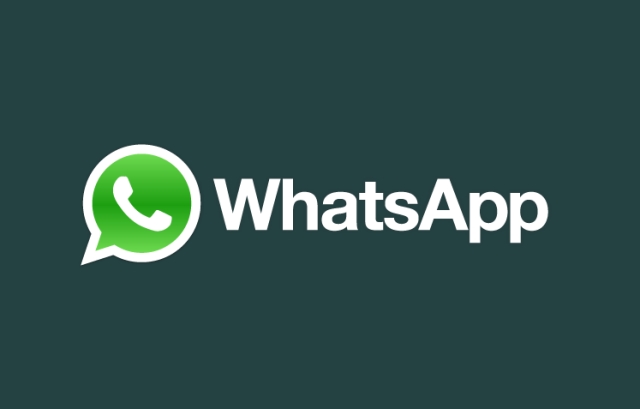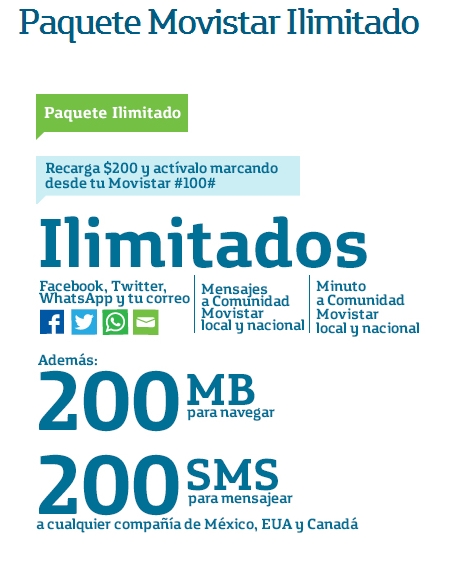
With yesterday’s news of WhatsApp being bought by Facebook, many US-based and English-speaking outlets were expressing shock and surprise at the amount paid for the messaging service compared to previous purchases made by the social network. As someone that frequently travels outside of the country, Facebook got the deal of a lifetime and it has nothing to do with the 450 million monthly active users of the service, it has to do with where those users are coming from, and it isn’t the US.
The Breakdown
I’m going to focus this editorial on Latin America and Mexico, since that’s where I do most of my personal traveling. Latin America has some of the most expensive rates for wireless service in the Western Hemisphere outside of the US and Canada. To give an example, a screencap of prepaid service on Mexican wireless provider Iusacell, who offers 4 prepaid packages that include SMS and data along with a specific amount of airtime for voice calls per month:
 The first package costs $11.50 USD, the second $15.05, the third $22.57 and the fourth $37.62. They all double the airtime for voice calls (denominated in Mexican pesos), but notice the number of SMS messages in each package compared to the amount of data allotted with 20 for the first package 40 for the second, 60 for the third and 100 messages for the fourth.
The first package costs $11.50 USD, the second $15.05, the third $22.57 and the fourth $37.62. They all double the airtime for voice calls (denominated in Mexican pesos), but notice the number of SMS messages in each package compared to the amount of data allotted with 20 for the first package 40 for the second, 60 for the third and 100 messages for the fourth.
With WhatsApp being bandwidth efficient, most people can get by on the first two packages for a month without having to spring for more expensive service other than topping up or even having to use the (quite paltry) SMS message allotment. There’s no incentive to use the overpriced SMS quantity in the above packages if WhatsApp can handle all of the messaging needs with the given data allotments.
SMS messages outside of the above quantities are charged at MXN$1.25 per message, which doesn’t seem like much when converted to US¢0.09 cents, but when that airtime can be left alone and you’re given more data than SMS to use for the price, the heavy adoption of WhatsApp starts to make sense, especially if it means not having to touch the SMS bucket or airtime for voice calls. MMS is even more expensive at MXN$5.20 per message, or US ¢0.39 cents per message, which explains why even more use WhatsApp instead of standard MMS messages to send pictures and video of loved ones to each other.
Carrier Bundling Of WhatsApp Common in Latin America
Another example is with Spain’s Movistar, which also has a major presence in Mexico and shares its network with the above carrier. Rather than take a more conventional approach with prepaid, that carrier actually rolls up unlimited access to WhatsApp, Twitter and Facebook for a flat rate of $15.05 per month along with 200 SMS and unlimited messaging/voice calls between customers on the same network in its most heavily advertised prepaid package:

Even with the increased SMS allotment and unlimited in-network messaging/voice calls, people still prefer taking advantage of the WhatsApp access to get around those limitations imposed by the carrier. Virgin Mobile in Chile and Colombia also bundles access to WhatsApp in its service plans and heavily promotes the bundling in its advertising, underscoring how popular the service is in Latin America, due to the relative lack of unlimited messaging packages on any local carriers compared to other countries.
Conclusion
While I don’t use WhatsApp in the US owing to the ubiquity of flat-rate prepaid with unlimited messaging, it’s become an indispensable lifeline when traveling in Mexico, so much so that I usually end up spending only the $38 for Iusacell’s most expensive prepaid package for 3GB of data and I’m set for up to a month, if not more.
While I’m sure most of the media is still wondering if $19 billion for a messaging app was such a good idea, maybe it might help to do some research and ask around before jumping to conclusions, especially when the evidence for the purchase is sitting right in front of you. Whether this means any major changes is another story entirely, but for now, WhatsApp’s purchase price is vindicated by what it enables users and even carriers to do in countries without inexpensive data access.
Good article – exactly what I was wondering. I just though that once again I was outside the mainstream not using the most popular chat app. Totally make sense why they were purchase for such an incredible amount of $